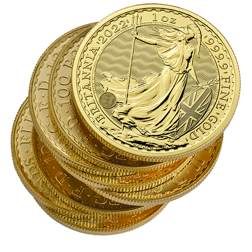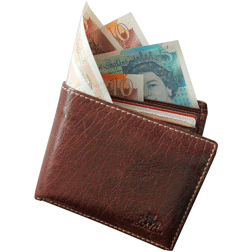Why is Gold Valued?
Gold has fascinated humans across the world for centuries, with those considering buying the precious metal often asking why is gold so valuable? In this article we explore the reasons that make gold a timeless asset, including its unique physical properties and aesthetic appeal, and why it often stands as a safe haven in times of economic uncertainty.
- Scarcity: Limited global supply enhances gold's intrinsic value.
- Aesthetic appeal: A symbol of wealth, historically coveted for its beauty.
- Tangible store of value: A reliable asset, historically proven to retain value over time.
- Historical significance: Cultural and monetary importance.
- Unique physical properties: Non-corrosive, durable, and versatile metal.
- Global hedge: Serves as a safe haven in times of economic uncertainty.
The history of gold and its value
Gold and silver’s value may not be immediately obvious when compared to other commodities such as grains, that have nutritional value and provide energy that we need to survive, or oil which can be used in industry and for fuel. People can be forgiven for questioning the value of precious metals and it is easy to jump to the conclusion that their shiny appearance give them value purely because they can be used for jewellery. However, this is not the main reason precious metals have value.
Gold has been regarded as valuable throughout human history, dating far back to ancient civilisations. Renowned and beloved due to its rarity and aesthetic allure, the precious metal adorned monuments and symbolised wealth and power. Later, as currencies emerged, gold then became a monetary standard, and was used widely in global trade and finance. The 20th century saw many countries move to fiat currencies, yet gold still retained its shine as a store of value, and in times of economic turmoil, like the Great Depression and more recent global recessions, gold's popularity surged as a safe-haven asset.
Exchange
Much of gold and silver’s value derives from their ability to be exchanged. Simply put, they are a great form of money.
Historically, many commodities have been used as a form of exchange, yet physical gold and silver have remained favoured due to specific physical properties making them perfect for monetary use:
Gold
Gold's physical characteristics contribute significantly to its value. Gold is a soft metal, meaning it is easily melted into small, easy to transport and store, coin shapes. It never rots like food, it is easy to combine with other materials, and it can be made consistently, meaning that the purity or fineness is the same.
Gold’s physical benefits do not end there. It does not rust or corrode like other metals (iron, lead and copper). This resistance ensures that gold retains its condition over time, maintaining its intrinsic qualities.
However, the true brilliance of gold lies in its scarcity. Unlike other commodities like water, plastic, and corn, there isn’t an infinite supply, thus claiming that it is ‘valuable’ seems plausible and fair. Experts estimate that around 208,874 tons of gold has been mined throughout history. If every ounce of this gold were positioned next to each other, this could create a cube measuring about 22 metres on each side. The global demand for gold has never been higher.
Silver
Like gold, silver has been shown to have the same desirable attributes, except silver is lesser in value, as there is more silver available in the world than gold. It is estimated that that around 1.7 million tons of silver has been discovered to date.
Both gold and silver are durable yet malleable, non-corrosive, and pretty much indestructible, meaning they can be great for storing value over time.
Anti-inflation
Because gold and silver have been assigned intrinsic value, they are often used as a hedge against rising inflation. Other commodities such as oil, agricultural products, and industrial metals are not able to do this, and most will rise in price as inflation rises.
Unlike paper ‘money’ (fiat currency), precious metals tend to hold value, meaning that what they are worth in the beginning, will remain in the future. An ounce of gold will always be an ounce of gold in relative terms. Due to its endurance, gold and silver are often seen as a safer bet for investment purposes during times of economic instability.
This often makes gold and silver attractive options for those seeking a safe-haven during unstable economic or geopolitical situations. The ability of these precious metals to maintain their value over the long term further solidifies their popularity.
Real money
Physical gold and silver have been recognised as money for many centuries, longer than any other form of currency. Throughout history, people have turned to these precious metals as a means to preserve their wealth for their future.
Gold and silver are impervious to common elements such as fire and water, these precious metals endure through time without need for upkeep or maintenance, or succumbing to decay or corrosion. Unlike digital ‘currencies’ represented by digital 1's and 0's or paper symbols with promises of value, physical gold bullion is real, tangible wealth, just like our ancestors used.
Physical bullion transcends modern money; it is real, actual wealth that you can touch and hold, similar to how our ancestors saw and used gold and silver. The fact that these precious metals have been used as money for so long shows how they've always been seen as valuable, making them lasting symbols of keeping wealth safe for many generations.
To sum up
In conclusion, gold and silver's enduring appeal is due to their tangible and timeless qualities. Recognised as money for many centuries, their scarcity and unique physical qualities contribute to their enduring value. Often serving as a safe-haven in a world of economic uncertainty and global debt, these precious metals offer many advantages that other investments do not. Physical gold and silver are symbols of stability, and are used as a way to preserve wealth for the future, often passed on from one generation to the next, and that is what makes them so very valuable.
This blog represents one person’s opinion only. Please note, gold and silver prices may go down as well as up. Atkinsons Bullion & Coins accepts no responsibility for any losses based on information we have provided. We do not offer investment advice. Please carry out your own research before making an investment decision.











